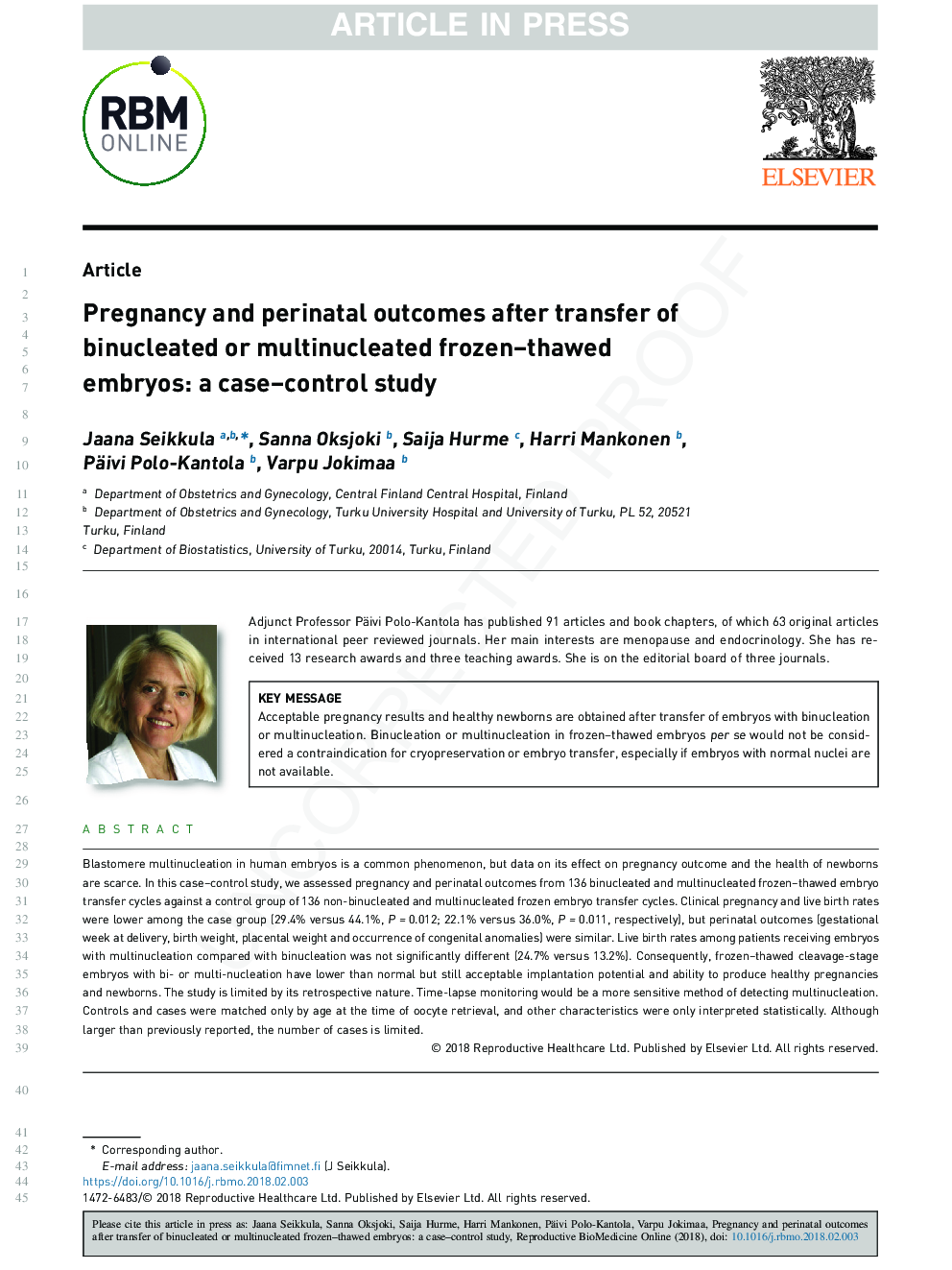| Article ID | Journal | Published Year | Pages | File Type |
|---|---|---|---|---|
| 8783818 | Reproductive BioMedicine Online | 2018 | 7 Pages |
Abstract
Blastomere multinucleation in human embryos is a common phenomenon, but data on its effect on pregnancy outcome and the health of newborns are scarce. In this case-control study, we assessed pregnancy and perinatal outcomes from 136 binucleated and multinucleated frozen-thawed embryo transfer cycles against a control group of 136 non-binucleated and multinucleated frozen embryo transfer cycles. Clinical pregnancy and live birth rates were lower among the case group (29.4% versus 44.1%, P = 0.012; 22.1% versus 36.0%, P = 0.011, respectively), but perinatal outcomes (gestational week at delivery, birth weight, placental weight and occurrence of congenital anomalies) were similar. Live birth rates among patients receiving embryos with multinucleation compared with binucleation was not significantly different (24.7% versus 13.2%). Consequently, frozen-thawed cleavage-stage embryos with bi- or multinucleation have lower than normal but still acceptable implantation potential and ability to produce healthy pregnancies and newborns. The study is limited by its retrospective nature. Time-lapse monitoring would be a more sensitive method of detecting multinucleation. Controls and cases were matched only by age at the time of oocyte retrieval, and other characteristics were only interpreted statistically. Although larger than previously reported, the number of cases is limited.
Related Topics
Health Sciences
Medicine and Dentistry
Obstetrics, Gynecology and Women's Health
Authors
Jaana Seikkula, Sanna Oksjoki, Saija Hurme, Harri Mankonen, Päivi Polo-Kantola, Varpu Jokimaa,
